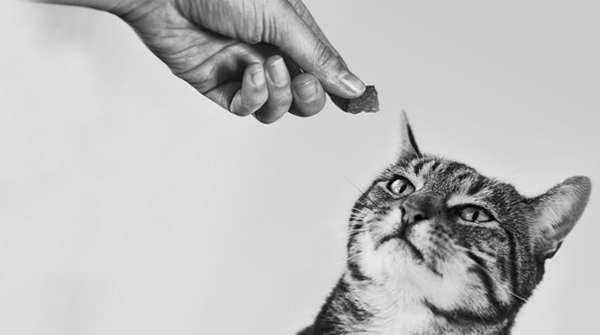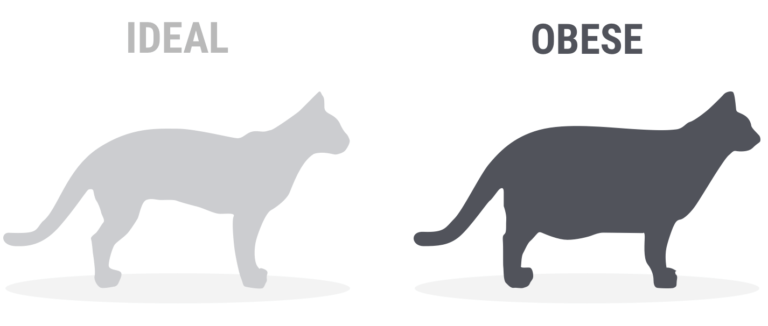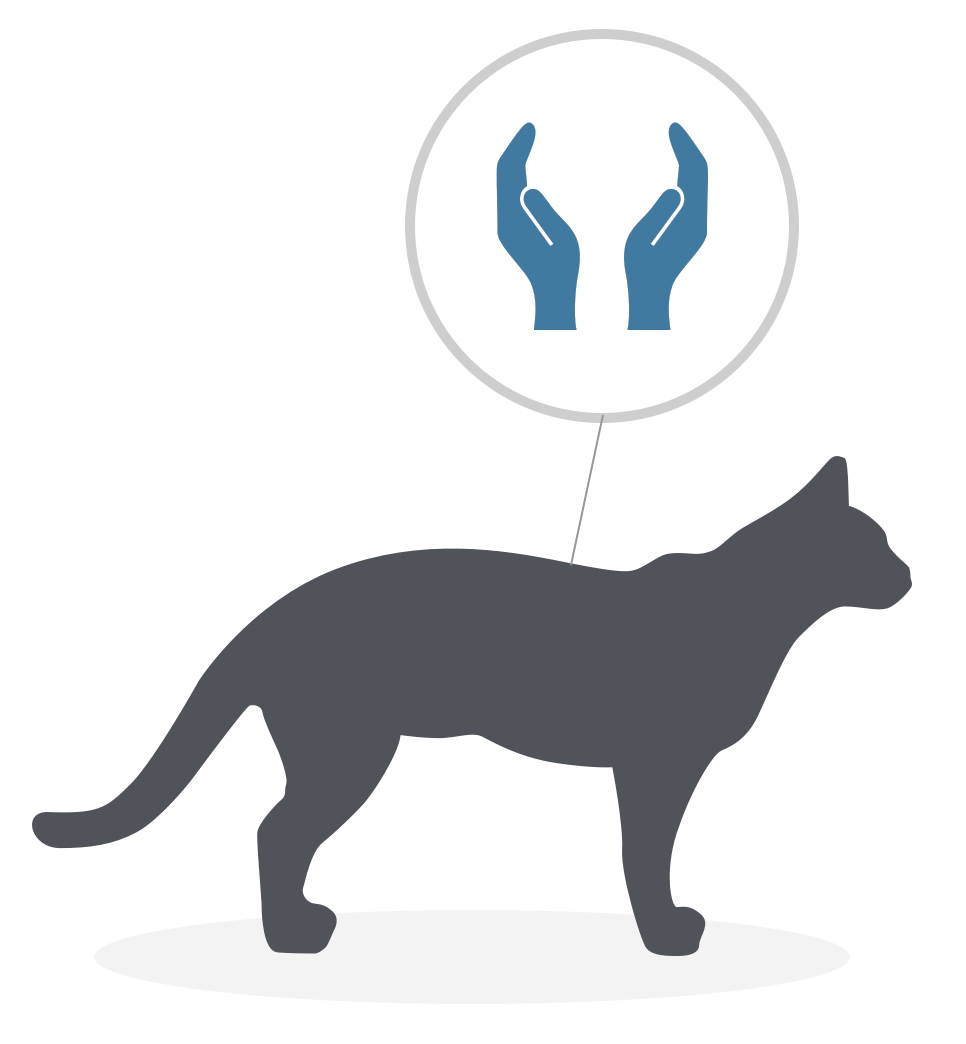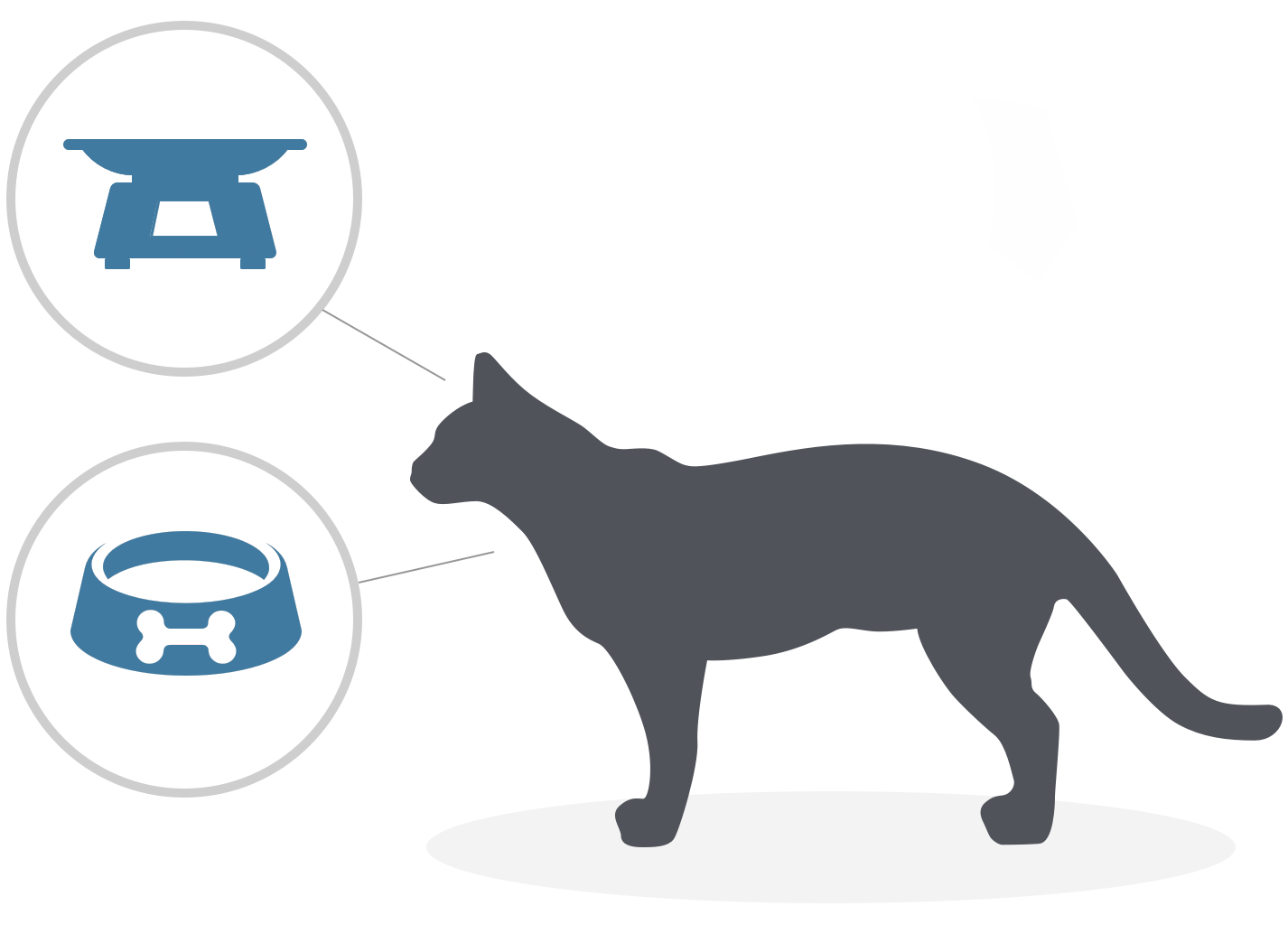A Dangerous Trend
63% of pet owners believe their pet is a healthy weight. But the reality is over 39% of cats are considered at least overweight in the UK.As a nation of pet lovers, we often show this love through treats or rewards. But this love can be “blind” – all these little extras add up, contributing significantly to a cat’s daily calorie intake. By adding human food into the mix, we could be inadvertently providing them with an imbalanced diet, frequently resulting in overweight pets being malnourished.
Pet Obesity - A Growing Issue
Being just one point over the ideal Body Condition Score (BCS) can take its toll in your cat’s physical and emotional wellbeing. Overweight cats are more likely to develop life-limiting conditions such as arthritis, diabetes and certain cancers. The good news is, weight loss can significantly lower the risk of them developing these illnesses. It can also give them a new lease of life, making them more playful and less lethargic.
Don't Let Love Blind You To Pet Obesity
The first step in tackling obesity is to identify your cat’s ideal body shape, using Look, Feel, Weigh. If their BCS is six out of nine or higher, now is the time to act.
Managing Weight Loss In Cats
Cats have their own unique set of natural behaviours and understanding these is a key factor in successful weight loss. Something as minor as incorrectly positioned bowl or the wrong sleeping arrangements can cause your cat environmental stress, which is now known to contribute to obesity. By understanding their natural behaviours you can make simple changes to reduce these stress factors and help them along their weight-loss journey.

Look
What can you see?
Don’t be love blind
Look from above; how easily can you see the curve of their waist behind their ribs? What abdominal tuck can you see? If they’re not clear – or not there at all – your cat will not be at his or her ideal shape. On the other hand, if the ribs, pelvic bone and vertebra are visible your cat could be underweight. Download a Body Condition Score chart to find out your cat’s shape.


Feel
What can you feel?
The shape of your cat is in your hands
With a light touch and flat hands feel all over your cat’s body. Start by placing your thumbs between the shoulder blades, just at the back of your cat’s head and move back, smoothing the fur as you go. You should be able to feel the ribs easily without too much fat covering them. Use the knuckles on your hand for comparison; hold out your hand flat and run your fingers over the knuckles on the back of your hand. This is how the ribs should feel. More prominent than this and your cat is underweight. Less prominent and they’re carrying excess weight. Download a Body Condition Score chart to find out your cat’s shape.
Weigh
What portion size do you serve?
Love is not a guessing game
Measuring aids, such as scoops and cups, are a highly inaccurate way of measuring out your cat’s meals. Without knowing it, you could be giving them 20% more or less food with each serving. Using digital scales to weigh out portions gives you greater control and provides your dog with an accurate daily calorie allowance.
In addition to weighing your cat’s food, it is important to keep a record of your cat’s weight too. Click here to download our helpful Weight Record Chart:

Top Tips for ongoing weight management
Your pet's health is our priority, which is why we want to help you tackle pet obesity head on. Select each of our top tips for easy-to-follow advice.
1. Follow feeding guidance
Feeding guidelines are sometimes confusing as different manufacturers can have different recommendations, so ensure you are feeding the correct diet and daily amount that best suits your cat’s age, breed neuter status and lifestyle.
If in any doubt always call the manufacturer to clarify the feeding guideline.
2. Weigh out at meal times
Use digital food scales to weigh out meals. Measuring aids such as scoops or cups are highly inaccurate, and you could be feeding your cat 20% more each mealtime without realising. That’s like feeding an extra day’s food every five days.
3. Don’t double-up when mix feeding
Different cats will have different food type preferences. If you’re feeding wet and dry formulations a good idea is to provide separate dishes for each type, or to feed wet and dry at different times of the day. Opt for wet and dry versions of the same brand that complement each other to ensure your cat gets the right nutrients in his or her daily diet.
4. Don’t turn a blind eye to treats
Remember to deduct any treats from your cat’s overall daily food allowance and don’t treat with human foods that are rich in calories. Keeping a diary of all the “extras” your cat enjoys everyday can be a useful tool.
5. Don’t worry about set meal times
In the wild your cat would hunt in short bursts and eat a series of small meals throughout the day. Because of this cat owners don’t need to worry about set mealtimes as we would for ourselves or dogs. Weighing your cat’s daily amount of food and then splitting this into several small meals is a great thing to do – a minimum of four small meals is advised.
6. Keep a feeding rota
If more than one person in your house is responsible for feeding your cat then keep a rota, this prevents you doubling up on treats and mealtimes
7. Consider your cat’s activity levels.
Recommended feeding guidelines are just that – guidelines. You may need to adjust their feeding quantities based on how much exercise your cat gets as well as their age. Your cat’s food manufacturer or vet should be able to provide guidance on this.
8. Their shape is in your hands
Regularly use look, feel, and weigh to assess their Body Condition Score and make adjustments to diet and exercise levels accordingly. You should be aiming for an ideal score of four to five. Veterinary nurses can typically provide a great support if you need help with this.
9. Love them enough to know their weight
Weighing your cat is the most accurate way of keeping tabs on progress and should be done every two weeks when they’re on a weight management programme. All vets and most pet stores will have digital scales you can use. Your vet should be able to provide you with guidance on your cat’s weight loss progress and advise you on the most suitable diet and exercise programme.
10. Don’t just cut back
Just cutting back on your cat’s usual food could be depriving them of essential nutrients, leading them to feel hungry and increasing begging behaviours. Switch to a diet that is specifically formulated for weight loss and is designed to satisfy hunger pets while ensuring they get a balanced diet. Consult your vet for the options available there.
11. Ensure one resource per cat
Cats are typically not too fond of sharing and this can sometimes, unknowingly, cause stress. A top tip is to make sure each cat has its own bed, litter tray, water bowl and food bowl. Add in one additional litter tray for every two cats – in other words if you have two or more cats, you should have one more litter tray than the number of cats.

 Exemplary Customer Service
Exemplary Customer Service
